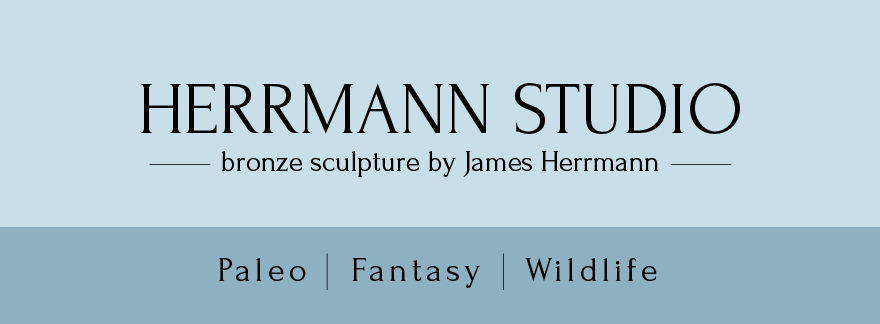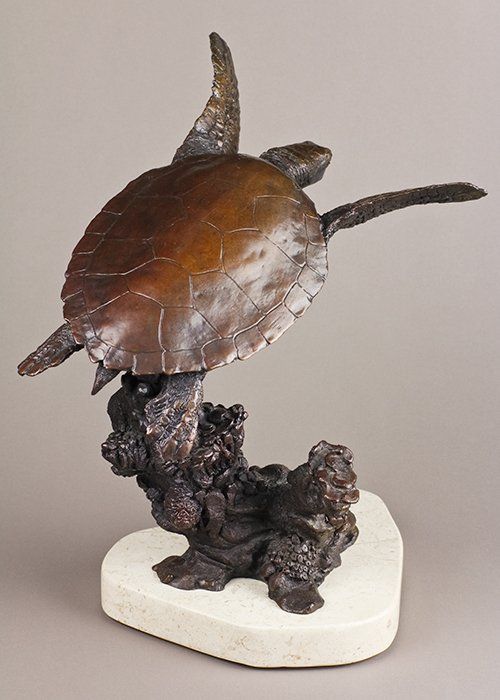Green Sea Turtle
Green Sea Turtle
Medium – Cast bronze on stone base
Dimensions – 12”H x 12”W x 12”D approx. 25lbs including stone base
Cast Bronze Edition • Price $4,500
During the summer of 2008 I had an opportunity to visit the country of Costa Rica. While there I spent two nights at a location along the shores of the Caribbean in the northeast of the country called Tortuguero or “place of the turtles”. I watched big green sea turtles swimming in the surf and coming ashore to nest. It was this experience that inspired me to create several sea turtle sculptures including “Green Sea Turtle”.
Green Sea Turtle is made from a combination of solid and hollow cast bronze.
It is a sculpture of a green sea turtle swimming around a coral head in a warm tropical sea.
One dark and stormy night, and it really was very dark and very stormy, I lay on the exposed beach of Tortuguero in a driving rain with bolt after bolt of lightning and chest throbbing thunder playing about me. It was on this beach, revealed in stark strobes of light which alternately revealed the beach in stark detail and an opaque blackness where I watched turtle after turtle come ashore, struggle up the beach, dig a nest, lay a clutch of eggs and return to the ocean. These were green sea turtles, 22,500 of which will repeat what I had witnessed each summer on this one beach, the largest such nesting area on the planet. Green sea turtles are one of several different species of turtle that nest on this beach and one of only about seven sea turtle species in all the oceans. The worlds other turtle species include the Hawksbill, Olive Ridley, Kemp’s Ridley, Loggerhead, Flatback and Leatherback.
Green sea turtles may live for up to an estimated 60 years in the wild. During their lifetime they may wander far, from Massachusetts to Brazil and from the Mediterranean Sea to the coasts of North and South America. Green Sea Turtles also can be found in the Pacific Ocean although they are much darker, so dark in fact that some call them Black Turtles and classify them as a separate species. After hatching, the little turtle leaves the beach of it birth and heads out into the open sea. It alternately swims and drifts with its goal of getting as far from shore as possible. Shore is where the majority of its swim or fly. The little turtle will eventually find floating clumps of algae (sea weed) and will spend the next few years drifting and feeding on a combination of small crustaceans, jellyfish, mollusks and algae. After several years, now the size of a small dinner plate, they move back into shallow coastal waters. Here they change their feeding habits. Green Sea Turtles feed as adults almost exclusively on algae and turtle grass and this is what the adolescent turtles begin doing as well. It may take up to ten years or more until the turtle reaches sexual maturity. It is then that another remarkable event in the life of the turtle occurs. No matter where they have been living and feeding for the last ten or twenty years, the turtle now swims back, possibly across an entire ocean, to the beach of its birth. This means that turtles feeding in the sea grass beds off the coast of Florida may migrate anywhere to the coast of the Carolinas or Mexico or to coastal Brazil to lay their eggs.
The impression of watching these animals haul out to lay their eggs was one of awe. I was witness to a primal cycle of life of a remarkable creature.



